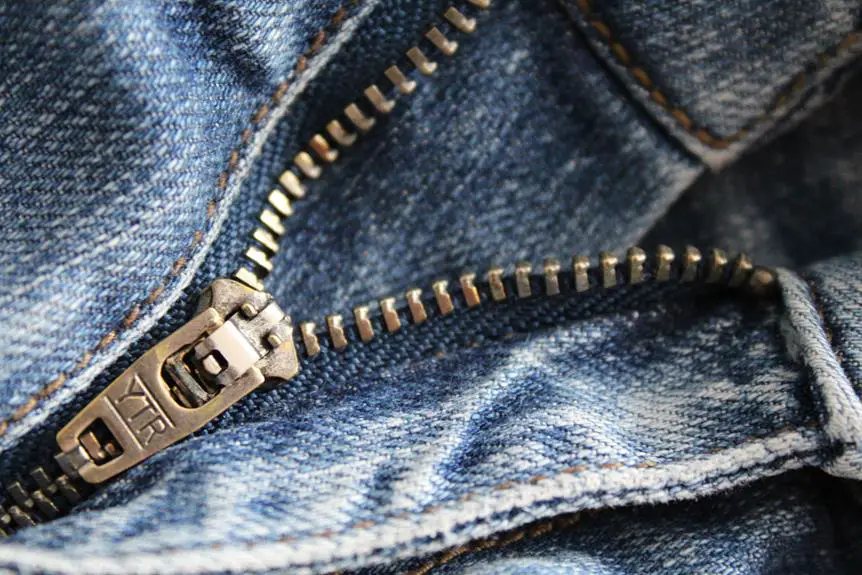When it comes to fastening fabric, is Velcro the ultimate solution? This question has piqued the interest of those seeking the most efficient and reliable fabric fastener.
In this exploration, we will delve into the history, functionality, advantages, limitations, and alternatives of Velcro. By scrutinizing these aspects, you will gain a comprehensive understanding of whether Velcro is indeed the paramount choice for your fabric fastening needs.
Key Takeaways
- Velcro was invented in the 1940s by Swiss engineer George de Mestral, inspired by the natural hook-and-loop fastening system of burdock burrs.
- Velcro has revolutionized fabric fastening in various industries such as fashion, aerospace, medical, and sports.
- Velcro provides secure and adjustable closure, making it ideal for frequent opening and closing, and is user-friendly for individuals with limited dexterity or mobility.
- Alternative fabric fasteners such as snap buttons, magnetic closures, and toggles offer different options to consider based on factors like durability, ease of use, and aesthetic appeal.
History of Velcro
You should delve into the origins of Velcro, tracing back to its invention in the 1940s by Swiss engineer George de Mestral. The invention timeline of Velcro dates back to 1941 when de Mestral, after a hunting trip in the Alps, noticed how burdock seeds clung to his clothing and his dog's fur. This observation sparked the idea for Velcro. By 1955, de Mestral had patented his invention, and the first commercially produced Velcro fasteners were made available.
The cultural impact of Velcro has been significant since its inception. It revolutionized the way people fastened things together, leading to its widespread use in various industries, from fashion to aerospace. The convenience and ease of use brought about by Velcro have made it a staple in everyday life. Its impact is also evident in the medical field, where it's used in prosthetic limbs and orthopedic braces. Furthermore, Velcro has found its way into the world of sports, with its application in athletic shoes and equipment.
How Velcro Works
The mechanism of Velcro fastening relies on tiny hooks and loops that securely bind together when pressed. When you press the two Velcro strips together, the hooks on one strip catch onto the loops of the other strip, creating a strong bond. This simple yet effective design has made Velcro a popular choice for a wide range of applications.
Here's a deeper look at how Velcro works:
- Velcro innovation: Velcro was invented by Swiss engineer George de Mestral in the 1940s after he observed how burrs stuck to his clothing. He then developed the concept of Velcro based on the natural hook-and-loop fastening system of burdock burrs.
- Hook and loop structure: The hook side of Velcro consists of tiny, stiff hooks, while the loop side is made up of softer, more pliable loops. When pressed together, these hooks and loops interlock to form a secure bond.
- Mechanical fastening: Unlike traditional fasteners such as buttons or zippers, Velcro relies on the mechanical adhesion of the hooks and loops, making it quick and easy to fasten and unfasten.
- Velcro applications: Velcro is widely used in various applications, including clothing, shoes, bags, and even in aerospace and medical industries for its versatility and reliability.
Advantages of Velcro
One significant advantage of Velcro as a fabric fastener is its ability to provide a secure and adjustable closure for various applications. The hook-and-loop design of Velcro allows for easy fastening and removal, making it ideal for items that require frequent opening and closing. This feature is particularly advantageous in the medical field, where quick access to bandages and medical devices is essential. Additionally, Velcro's versatility lends itself to a wide range of applications, from clothing and footwear to aerospace and automotive industries. Its ability to withstand repeated use and its durability in diverse environments make it a preferred choice in many settings.
Another advantage of Velcro is its user-friendly nature. Unlike traditional fastening methods such as buttons or zippers, Velcro offers a simple and intuitive closure system, making it accessible for individuals with limited dexterity or mobility. This accessibility has led to its widespread adoption in adaptive clothing, shoes, and assistive devices.
Furthermore, the ease of customization and reusability of Velcro further contributes to its advantages. Its ability to be cut to size and reattached multiple times makes it a cost-effective and practical solution for various fastening needs. Whether used in apparel, industrial settings, or healthcare, Velcro's adaptability and reliability make it a highly advantageous fabric fastener for a multitude of applications.
Limitations of Velcro
When considering the limitations of Velcro, it's important to understand where it falls short in comparison to other fabric fastening options. While Velcro is versatile and widely used, it does have its limitations that warrant consideration.
Durability Challenges:
Over time, the hooks and loops of Velcro can wear out, leading to reduced fastening strength. This can be particularly problematic in high-wear applications, such as in military gear or industrial settings.
Maintenance Requirements:
Velcro can accumulate lint, debris, and other particles, which can diminish its adhesive properties. Regular cleaning and maintenance are necessary to ensure optimal performance, adding an extra layer of upkeep compared to other fastening methods.
Susceptibility to Environmental Factors:
Extreme temperatures, moisture, and exposure to certain chemicals can affect the adhesive properties of Velcro, potentially leading to decreased effectiveness in challenging environmental conditions.
Noise and Aesthetics:
In some applications, the characteristic ripping sound of Velcro can be disruptive. Additionally, the bulkiness of Velcro fasteners may not be suitable for situations where a sleek or inconspicuous fastening method is preferred.
Understanding these limitations is crucial when evaluating the suitability of Velcro for specific applications.
Alternative Fabric Fasteners
Considering fabric fastening options beyond Velcro, you may find that snap buttons offer a durable and versatile alternative. Snap fasteners, also known as press studs, consist of two interlocking discs, commonly made of metal or plastic, that securely fasten fabric together. Unlike Velcro, snap buttons provide a more discreet and streamlined closure, making them ideal for garments, bags, and accessories where aesthetics are important. They also offer a secure hold and are less prone to snagging on other fabrics or materials, making them a reliable choice for long-term use.
In addition to snap fasteners, hook and loop alternatives, such as magnetic closures and toggles, are gaining popularity in the fabric fastening industry. Magnetic closures provide a sleek and seamless closure, often used in luxury handbags and outerwear. Toggles, on the other hand, offer a rustic and decorative alternative, commonly used in outdoor and casual wear.
When considering alternative fabric fasteners, it's important to weigh factors such as durability, ease of use, and aesthetic appeal. Each option has its own unique characteristics, and finding the right fastener will depend on the specific requirements of your project.
Choosing the Right Fastener
To choose the right fastener for your project, assess the durability and aesthetic appeal of available options, considering snap buttons, magnetic closures, and toggles as versatile alternatives to Velcro. Each fastener has its own strengths and weaknesses, so it's crucial to evaluate which one best suits your specific needs.
When choosing between velcro and zippers, consider factors such as ease of use, durability, and aesthetic appeal. Velcro provides a quick and simple closure, making it ideal for items that require frequent access, such as shoes and bags. On the other hand, zippers offer a more secure closure and a sleeker appearance, making them a preferred choice for garments and accessories.
If you're debating Velcro vs buttons, think about the level of security and versatility required for your project. Buttons are traditional and can add a classic touch to your design, but they may be more time-consuming to fasten and unfasten compared to Velcro. On the other hand, Velcro provides a strong grip and is easy to adjust, making it suitable for items that need frequent opening and closing.
Frequently Asked Questions
Can Velcro Be Used in Extreme Weather Conditions?
In extreme weather conditions, Velcro can still be effective. It may experience reduced adhesion in heavy rain or extreme heat, but it generally performs well in snow, humidity, and other challenging weather environments.
What Are the Environmental Impacts of Using Velcro Compared to Other Fabric Fasteners?
When considering environmental impact and sustainability, it's important to weigh the effects of using Velcro compared to other fabric fasteners. Evaluating factors like production processes, material sourcing, and end-of-life disposal is crucial.
Are There Any Specific Maintenance Requirements for Velcro?
To maintain Velcro, regularly clean it with a gentle brush or adhesive roller to remove debris. Avoid harsh chemicals or soaking. Over time, Velcro's durability may decrease, so periodically check for wear and consider replacement.
Can Velcro Be Easily Customized for Different Applications?
You can easily customize Velcro for various applications. With options like different adhesives, hook and loop sizes, and colors, it's versatile for uses in clothing, automotive, medical, and more. Its customization options make it a top choice.
What Industries or Applications Are Best Suited for Velcro Fasteners?
In the medical devices industry, Velcro fasteners are ideal for securing equipment and providing easy access. Automotive industry benefits from Velcro for interior trim and securing components. In aerospace, it's used for cable management. Sports equipment also utilizes Velcro for adjustable straps.
- Tetron Fabric for Marine Applications: Durability and Use Cases - June 18, 2025
- Tetron Fabric for Outdoor Furniture: Weather Resistance and Care - June 18, 2025
- Tetron Fabric for Wall Coverings: Style and Application Tips - June 18, 2025







